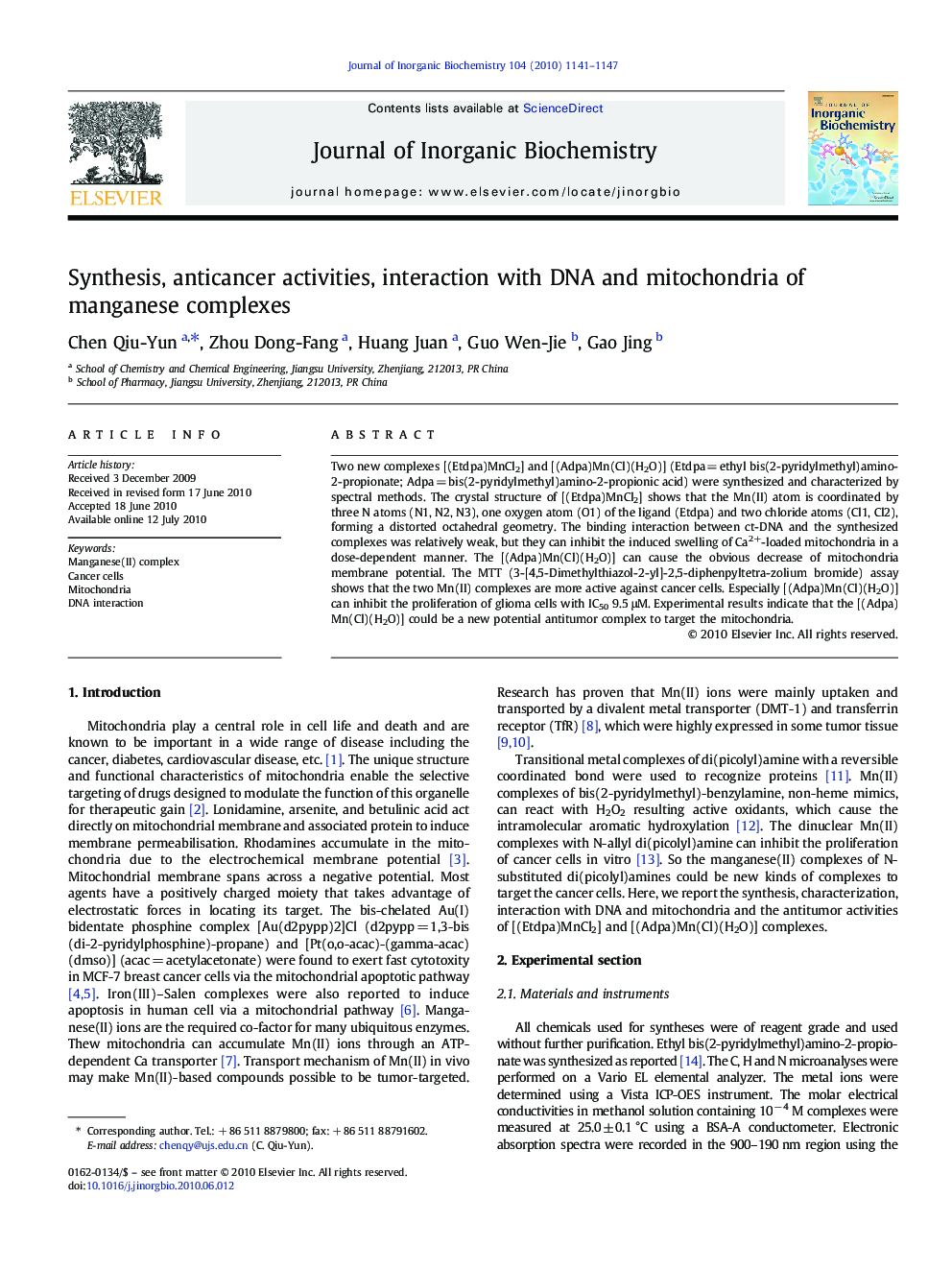| Article ID | Journal | Published Year | Pages | File Type |
|---|---|---|---|---|
| 1317928 | Journal of Inorganic Biochemistry | 2010 | 7 Pages |
Two new complexes [(Etdpa)MnCl2] and [(Adpa)Mn(Cl)(H2O)] (Etdpa = ethyl bis(2-pyridylmethyl)amino-2-propionate; Adpa = bis(2-pyridylmethyl)amino-2-propionic acid) were synthesized and characterized by spectral methods. The crystal structure of [(Etdpa)MnCl2] shows that the Mn(II) atom is coordinated by three N atoms (N1, N2, N3), one oxygen atom (O1) of the ligand (Etdpa) and two chloride atoms (Cl1, Cl2), forming a distorted octahedral geometry. The binding interaction between ct-DNA and the synthesized complexes was relatively weak, but they can inhibit the induced swelling of Ca2+-loaded mitochondria in a dose-dependent manner. The [(Adpa)Mn(Cl)(H2O)] can cause the obvious decrease of mitochondria membrane potential. The MTT (3-[4,5-Dimethylthiazol-2-yl]-2,5-diphenpyltetra-zolium bromide) assay shows that the two Mn(II) complexes are more active against cancer cells. Especially [(Adpa)Mn(Cl)(H2O)] can inhibit the proliferation of glioma cells with IC50 9.5 μM. Experimental results indicate that the [(Adpa)Mn(Cl)(H2O)] could be a new potential antitumor complex to target the mitochondria.
Graphical abstractThe manganese (II) complexes of bis(2-pyridylmethyl)amino-2-propionic acid) were synthesized and characterized by spectral methods. The complex can cause the obvious decrease of mitochondria membrane potential and can inhibit the proliferation of glioma cells with IC50 9.5 μM. Experimental results indicate that the [(Adpa)Mn(Cl)(H2O)] could be a new potential antitumor complex to target the mitochondria.Figure optionsDownload full-size imageDownload as PowerPoint slide
